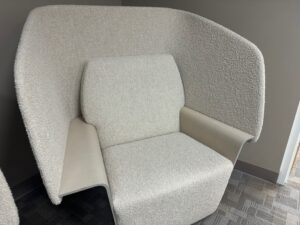Are you tired of spending a fortune on ergonomic furniture that doesn't really solve your problems? Do you still suffer from back pain, neck ache, sore shoulders and other musculoskeletal issues despite having a fancy chair, desk and keyboard?...
<?xml version="1.0"?>Are you tired of spending a fortune on ergonomic furniture that doesn't really solve your problems? Do you still suffer from back pain, neck ache, sore shoulders and other musculoskeletal issues despite having a fancy chair, desk and keyboard? If so, you might want to consider a different approach to improving your posture and movement: the Alexander Technique.
In the pursuit of comfortable seating, ergonomic chairs have become a staple in many offices and homes. However, as we delve into the intricacies of body mechanics and well-being, it becomes evident that the touted benefits of ergonomic chairs might not be as effective as we once believed, in fact, despite being a multi-billion dollar industry you may be surprised to hear there is no scientific research that validates the use of ergonomic chairs.

The Pitfalls of Ergonomic Chairs
The primary issue lies in the fact that ergonomics often attempts to address the problem from a mechanical engineering perspective rather than considering behavioral aspects. It is possible to maintain stiffness in both a "correct" posture and an "incorrect" one. Therefore, any solution should delve into the psychological dimensions of the situation as much as the mechanical ones.
Chairs, being inanimate objects, cannot assume responsibility for your behavior. When it comes to expensive ergonomic chairs, individuals may fall into two categories: some might believe that the additional expense guarantees more support, leading to a diminished sense of responsibility for their behavior, while others might justify the cost by becoming more mindful in their actions. The latter can be achieved without the need to invest $1,000 in a chair that you are reliant on.
In my view, the concept of an ergonomic chair for sitting is akin to the idea of an ergonomic floor to stand on—making about as much sense.
What is the Alexander Technique?
The Alexander Technique is a method of education that teaches you how to be more aware of your body, how to improve poor posture and move more efficiently. The Alexander Technique is not a form of exercise, therapy or treatment in the usual sense, it is a skill that you learn from a qualified teacher. The teacher will observe your movements and show you how to move, sit and stand with more ease, better balance and less strain. They will use their hands to gently guide you in your movements, help you maintain a better relationship between your head, neck and spine, and to release muscle tension.
The Alexander Technique can help you get rid of tension in your body and relieve problems such as back pain, neck ache, sore shoulders and other musculoskeletal problems. It can also enhance your performance and prevent injury in music, drama, sport, business and presentation skills. It can help you develop ease and elegance in movement, improve your breathing and vocal quality, and support your pregnancy and childbirth. It can also help you cope better with stress and improve your mental clarity and focus.
What are the benefits of the Alexander Technique?
There is also scientific evidence to support some of the claims made by the Alexander Technique. For example, a randomised controlled trial published in the British Medical Journal in 2008 found that the Alexander Technique was effective in reducing chronic and recurrent back pain. The study involved 579 patients with chronic or recurrent low back pain who were randomly assigned to one of four groups: normal care, massage, six Alexander Technique lessons, or 24 Alexander Technique lessons. The results showed that after one year, the group that received 24 Alexander Technique lessons had an average of 3 days of pain per month, compared to 11 days for the normal care group, 7 days for the massage group, and 6 days for the six-lesson group. The group that received 24 lessons also reported improved quality of life, reduced disability and less use of medication.
 It's not the chair that does the sitting, you can learn to sit comfortably on any chair.
It's not the chair that does the sitting, you can learn to sit comfortably on any chair.
The Alexander Technique as an Alternative
Conclusion
In the quest for ergonomic solutions, it's crucial to question the conventional wisdom surrounding chairs and seating. Ergonomic furniture may seem like a good idea to improve your comfort and health at work or at home, but it is not a substitute for good posture and movement habits. The Alexander Technique stands as a compelling alternative, fostering a holistic understanding of the mind-body relationship. By embracing dynamic poise and promoting self-awareness, this technique opens new avenues for achieving true comfort and well-being in our daily lives. The Alexander Technique can help you reduce pain, improve performance, and enhance your well-being in all aspects of life.














